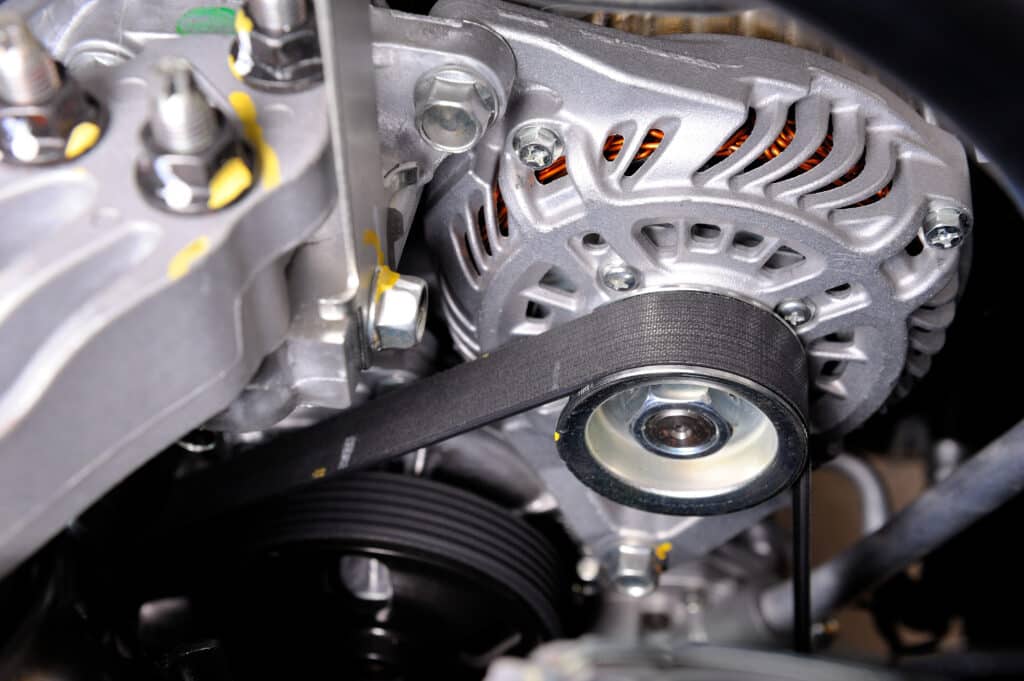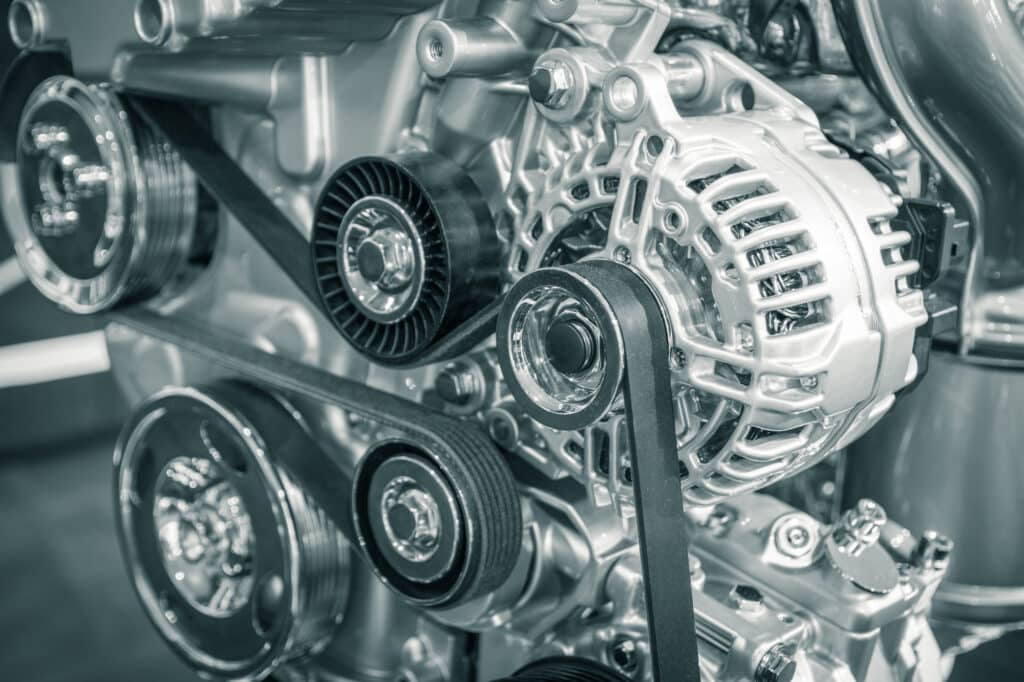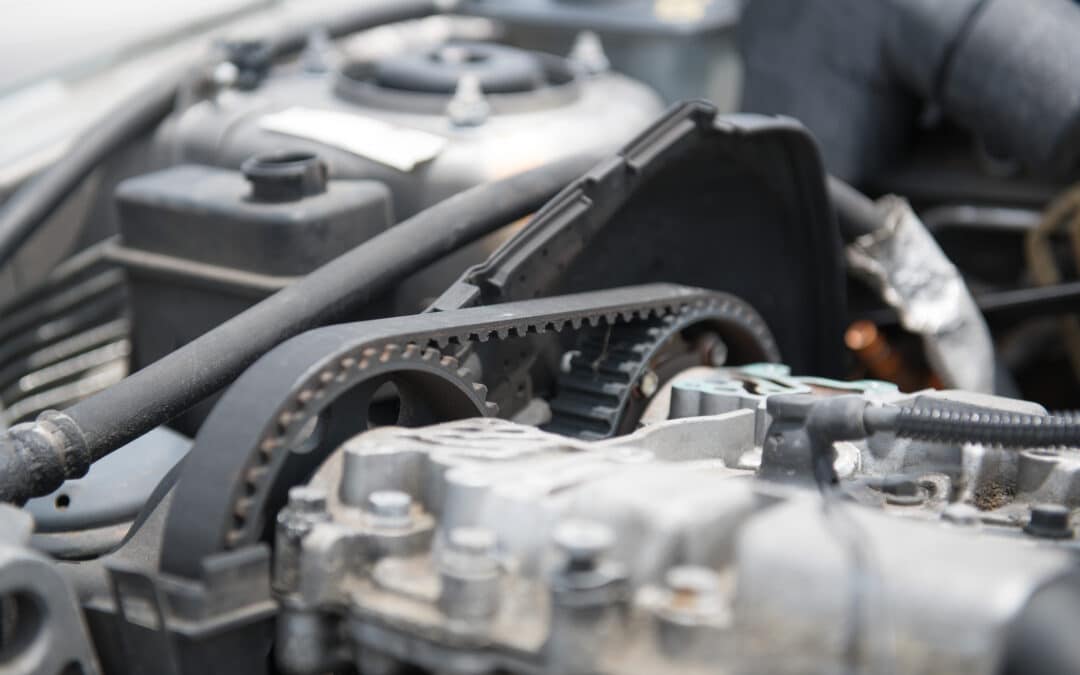The Ultimate Guide to Timing Belt Replacement: What Every Car Owner Should Know
Your vehicle’s engine is like a finely-tuned orchestra, with each component playing its part in harmony. The timing belt acts as the conductor, ensuring that the camshaft and crankshaft move in perfect synchronicity. To put it simply, the timing belt is a crucial component of your engine, managing the opening and closing of valves in accordance with piston movements. This synchronization is vital for efficient engine performance and to avoid catastrophic damage.
A well-maintained timing belt ensures your engine runs smoothly. On the flip side, a worn or broken timing belt can lead to disastrous outcomes, costing thousands of dollars in repairs. Did you know that a timing belt failure could lead to complete engine failure in interference engines, where the pistons collide with the valves? Timely timing belt replacement of the timing belt not only saves you money but also protects your peace of mind while driving.
What Is a Timing Belt and Why Does It Matter?
Definition and Function
The timing belt is a rubber belt with teeth that keeps your engine’s camshaft and crankshaft synchronized. This synchronization ensures precise timing for the opening and closing of engine valves, allowing for optimal combustion and performance. Without it, your engine simply wouldn’t work.
Importance of a Properly Functioning Timing Belt
A worn or damaged timing belt can wreak havoc on your engine’s operation. If it fails, valves and pistons can collide, leading to costly damage. It’s not just about avoiding repairs—it’s about maintaining your vehicle’s efficiency, safety, and performance.
Eye-Opening Statistics
Did you know that timing belt failure can result in timing belt repairing costs upward of a few thousand dollars? Or that a broken timing belt can occur without warning, leaving you stranded on the side of the road? These are just some of the.

Timing Belt Replacement
Timing Belt vs. Timing Chain: What’s the Difference?
When it comes to your car’s engine, timing belts and timing chains might seem like small components, but they play a crucial role. Both are responsible for synchronizing the rotation of the crankshaft and camshaft, ensuring your engine runs smoothly. However, they differ significantly in design and maintenance needs.
- Timing Belt: Crafted from reinforced rubber, timing belts are favored for their quiet operation. They’re lightweight and tend to be less expensive upfront, making them a popular choice in many vehicles. However, they require regular replacement, typically every 60,000 to 100,000 miles, to prevent potential engine damage.
- Timing Chain: On the flip side, timing chains are made of metal, which makes them more durable. They can often last the lifetime of the vehicle, reducing the need for frequent replacements. The trade-off? They can be noisier and, if they do need repairs, can be more costly.
Pros and Cons:
- Timing Belt Pros: Enjoy quieter operation and lower initial costs. But remember, regular maintenance is key.
- Timing Chain Pros: Benefit from long-lasting durability with less frequent replacements. However, be prepared for potentially higher repair costs if issues arise.
Determining Your Vehicle’s Timing System:
Curious about what’s under your car’s hood? Check your owner’s manual or consult with a mechanic to find out whether your vehicle uses a timing belt or chain. At Pyle Automotive, our specialists can help identify your car’s timing system during a routine inspection, giving you peace of mind and keeping your engine in top shape.
Signs Your Timing Belt Needs Replacement: A Comprehensive Guide
Keeping your vehicle in top condition requires attention to its critical components, and the timing belt is one of them. Ignoring its wear and tear can lead to serious engine problems. Here’s how you can spot the signs of a failing timing belt and why regular inspections are crucial.
- Recognizing the Symptoms: Is your engine making a ticking noise? This could be a red flag for your timing belt. Other symptoms include engine misfiring or running rough, which might indicate that the belt is slipping. Additionally, if you notice oil leaking from the front of the engine or experience difficulty starting your car, these are signs your timing belt might need replacement.
- Visual Inspection Tips: A quick visual check can reveal a lot. Look for signs of fraying, cracks, or glazing on your timing belt. If you spot any of these, it’s a clear indication that it’s time for a replacement. If you’re not comfortable doing this yourself, ask a trusted mechanic, like those at Pyle Automotive, to take a look.
- Why Regular Inspections Matter: Routine checks of your timing belt can help catch problems early, preventing unexpected breakdowns and potentially saving you from costly repairs. These inspections not only extend the life of your vehicle but also ensure your safety. At Pyle Automotive, we recommend incorporating timing belt inspections into your regular service schedule to keep your car running smoothly and reliably.
Understanding Timing Belt Replacement: A Guide for Car Owners
When to Replace Your Timing Belt
Timing belt replacement is crucial for vehicle maintenance. Most manufacturers suggest replacing the timing belt between 60,000 and 100,000 miles, but these intervals can vary based on your car’s make and model. Always consult your owner’s manual for precise guidelines.
Factors Affecting Timing Belt Longevity
Your driving habits and conditions significantly influence the lifespan of your timing belt. If you frequently drive in stop-and-go traffic, take short trips, or operate your vehicle in hot climates, your timing belt may wear out faster than expected. These demanding conditions can lead to earlier replacements, so stay vigilant.
Expert Insights on Timing Belt Maintenance
Automotive experts emphasize the importance of adhering strictly to your manufacturer’s recommended schedule. Ignoring these guidelines and waiting too long can result in belt failure, which may cause severe damage to other engine components, leading to costly repairs.

Timing Belt Replacement Service
Ignoring Timing Belt Issues: The Consequences You Can’t Afford
Your car’s timing belt might seem like a small component, but its failure can lead to massive, costly problems. Understanding the stakes is crucial for every car owner.
Potential Engine Damage
A broken timing belt disrupts the synchronization between the camshaft and crankshaft, a disaster waiting to happen. Picture this: bent valves, damaged pistons, and ruined cylinder heads. Such catastrophic damage doesn’t just sound expensive—it is. Repairing timing belt for these issues can easily cost between a few thousand to tens of thousands of dollars. In some cases, it may even render your car completely useless.
Safety Risks
Beyond the financial hit, there’s a significant safety concern. A failed timing belt can cause your car to suddenly stall, putting you at risk of accidents or leaving you stranded in inconvenient or potentially dangerous locations. Imagine being stuck on a busy highway or in the middle of nowhere at night.
Peace of Mind for Car Owners
But here’s the silver lining: these risks are entirely preventable. With regular maintenance and timely replacements, you can avoid these nightmares altogether. Keep your car running smoothly and safely by staying vigilant about your timing belt’s condition. It’s a small effort for a big reward—peace of mind and a well-functioning vehicle.
How to Find the Right Service for Timing Belt Replacement
Timing belt replacement isn’t a job for just anyone. Here’s what to look for in a service provider:
- Qualified Mechanics: Choose a trusted auto shop with certified mechanics, like the ASE-certified experts at Pyle Automotive. Reliable experience ensures the job is done correctly and efficiently.
- High-Quality Parts: Using OEM (Original Equipment Manufacturer) parts, like those at Pyle Automotive, guarantees lasting performance and reliability. Always ask about warranties for added peace of mind.
- Cost of Prevention vs. Repair: Proactively replacing your timing belt generally costs a few hundred dollars, while engine repairs from a failed belt can reach thousands. It’s always more affordable to prevent problems than to correct them.
Pyle Automotive’s Approach to Timing Belt Replacement
When it comes to timing belt replacements, Pyle Automotive is your trusted partner.
Expertise and Experience
Our team of skilled, certified technicians has extensive experience in timing belt replacements, delivering precise and reliable outcomes every time.
Quality Parts
We only use high-quality OEM parts that match your vehicle’s specifications, ensuring a long-lasting and trouble-free solution.
Timely Replacement
At Pyle Automotive, we strictly follow manufacturer recommendations on replacement intervals to help prevent avoidable breakdowns and costly repairs.

Auto Timing Belt Replacement
Frequently Asked Questions (FAQs)
What Happens if My Timing Belt Breaks While Driving?
If your timing belt snaps while driving, your engine will stop immediately. Depending on your car’s design, this could lead to significant engine damage.
How Will I Know It’s Time for a Replacement?
Follow your manufacturer’s maintenance schedule and stay alert for auto common warning signs like those mentioned above. If in doubt, consult a professional.
Can I Replace a Timing Belt Myself?
Timing belt replacement is a complex task and best left to experienced mechanics. Incorrect replacement can lead to severe engine problems, so always rely on trusted experts like Pyle Automotive.
Keep Your Engine Running Smoothly with Pyle Automotive
Don’t risk costly repairs or safety hazards—schedule a timing belt inspection and replacement with Pyle Automotive today. Our team of experienced technicians will ensure your car’s engine stays in top shape, giving you the peace of mind to hit the road with confidence. Trust us for all your automotive needs! So remember, when it comes to keeping your vehicle running smoothly and safely, don’t overlook the importance of timing belt maintenance. Stay on top of your regular service schedule and consult with trusted professionals like Pyle Automotive for expert insights and high-quality solutions. Your car and wallet will thank you!
https://www.google.com/maps?cid=6320892374453977035

